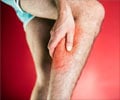- Compartment Syndrome - (http://orthoinfo.aaos.org/topic.cfm?topic=a00204)
- Chronic exertional compartment syndrome - (http://www.mayoclinic.org/diseases-conditions/chronic-exertional-compartment-syndrome/basics/definition/con-20026471)
- About Compartment Syndrome - (http://my.clevelandclinic.org/services/orthopaedics-rheumatology/diseases-conditions/hic-compartment-syndrome)
- More on Compartment syndrome - (http://www.nhs.uk/conditions/compartment-syndrome/pages/introduction.aspx)
What is Compartment Syndrome?
Compartment Syndrome is a painful and serious condition, which occurs when there is an increased or excessive pressure within a confined space in the body. It mainly affects areas of the body called as fascial compartments. Fascial compartments are present around the muscles and they are a special tissue that forms a membrane layer around the muscles. This is especially seen in the muscles of the leg, feet, forearms or hands, or wherever there is an enclosed space in the body. Muscles of the abdomen and buttocks are not commonly affected.
The pressure within the muscles of the affected area could increase to dangerous levels, affecting the flow of blood to and from the affected tissues thus resulting in decreased nourishment and oxygen flow to the tissues (ischemia) and nerves. If not treated promptly, it could lead to an emergency situation requiring a surgery and possibly an amputation.
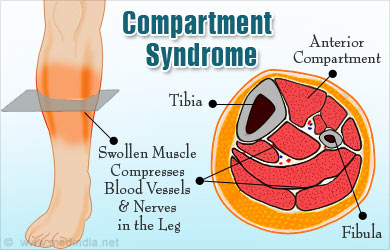
What are the Types of Compartment Syndrome?
Compartment syndrome can be classified as either acute or chronic.
Acute compartment syndrome: This is the most common type of compartment syndrome and typically occurs after a traumatic injury such as a fracture or an accident which can crush your arms or legs, though in rare cases it can also develop after a minor injury. It is considered as a medical emergency and if not treat promptly can cause permanent muscle & nerve damage resulting in loss of function of the limb.
Chronic (exertional) compartment syndrome: It is also known as an exertional compartment syndrome which is an exercise-induced condition caused primarily by activities which involve repetitive workouts such as tennis, swimming, running, amongst others. This type is usually not considered as a medical emergency condition.
What are the Causes of Compartment Syndrome?
Acute compartment syndrome
- Tibial or forearm fractures
- Intravenous drug injection
- Vascular puncture
- Ischemic reperfusion after injury
- Injuries due to a crash or trauma
- Tight and constricting bandages and casts
- A severe muscle injury such as the one which occurs when a motorcycle accidentally falls on the leg of the rider
- Use of anabolic steroids
- Lying for too long in a position that blocks a blood vessel, such as period of unconsciousness, which causes prolonged compression of the muscle.
- Surgery of a damaged blood vessel in arms or legs that has been blocked for many hours.
- Blood clot in the blood vessels mainly of the legs or forearms
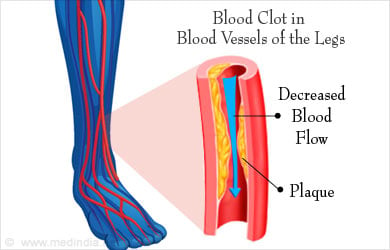
Chronic compartment syndrome
- Exercise-induced muscle and nerve damage inducing excessive pressure within a muscle, which over a period cuts off blood supply to the muscle.
- Repetitive vigorous exercises such as running, swimming, fast walking amongst others
- It is also observed in sports such as basketball players, soccer players and skiers.
- Venous hypertension (excessive pressure in the veins)
- Thick or inelastic band of tissue (fascia) surrounding a muscle
What are the Symptoms of Compartment Syndrome?
Acute compartment syndrome
- Severe pain in the affected area, which does not subside even after taking appropriate medications or elevating the injured area
- Pain could worsen with certain movements such as passive stretching of the muscle involved.
- Paraesthesia (tingling/burning sensation) around the affected area
- Tightness of the muscle
- Numbness or paralysis in some cases, which could lead to permanent damage of the muscle involved.
Chronic compartment syndrome
- Pain or cramping in the legs particularly during exercise, which typically subsides within 30 minutes once you stop exercising
- Aching, burning sensation in the affected limbs
- Difficulty in moving the limbs or the affected area
- Swelling or bulging of the muscles due to muscle hernia
- Foot drop in extreme cases if nerves in the legs are affected
- Weakness in the limb
- Tingling or numbness in the legs
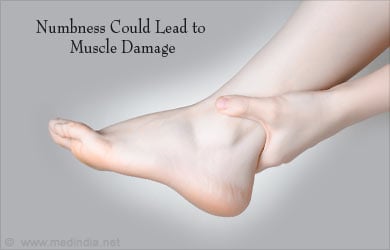
How do you Diagnose Compartment Syndrome?
Physical tests: Your doctor will conduct a physical examination to check for signs of acute or chronic compartment syndrome as well as ask you for the symptoms that you are experiencing. Your doctor may also press on the affected area to determine the intensity of your pain. He might rule out tendonitis by pressing on your tendons.
Intra-compartment pressure testing: This is considered as the gold standard for diagnosing compartment syndrome. Your doctor will insert a needle into the suspected region of compartment syndrome with an attached pressure meter, in order to record the pressure in the damaged muscle compartment. This measurement is done twice before and after the exercise. If pressure still remains high even after the exercise, then you would be diagnosed with compartment syndrome
Blood and urine tests: Your doctor may do blood and urine tests to check for chemical markers of muscle injury.
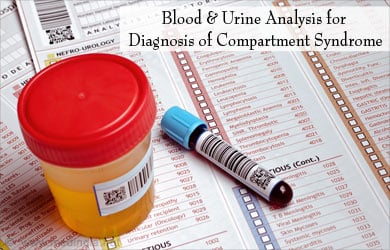
Imaging tests: Tests like MRI Scan uses powerful magnets and a computer to take pictures of the injured area. Imaging tests such as X-rays may be done to examine if your tibia does not have a stress fracture. Near infrared spectroscopy (NIRS) determines if your muscles have adequate blood flow.
Doppler ultrasound: This test is done to check the arterial flow and deep venous thrombosis.
How do you Treat Compartment Syndrome?
Acute compartment syndrome
Acute compartment syndrome is a surgical emergency and must be treated in the hospital by a procedure known as fasciotomy. Unfortunately, currently there are no modes of nonsurgical treatment available.
Fasciotomy involves making an incision to cut open the skin and fascia around the affected compartment to relieve the pressure inside the muscles and avert permanent tissue damage.
Sometimes, the swelling can be quite severe so the skin incision cannot be closed immediately but should be done after about 48-72 hours when the swelling subsides. At times, a skin graft might be needed to close the wound.
Chronic Compartment Syndrome
In this form of compartment syndrome, the pain and other symptoms usually subside once the activity causing it is stopped, hence rarely requires any treatment. In some cases, physical therapy and Orthotics (inserts for shoes) are used as therapy along with anti-inflammatory medications.
If non-surgical therapy fails, surgery could be an option, however this is an elective procedure and not an emergency. Similar to acute compartment syndrome, the surgeon may cut open fascia, which surrounds the compartment to reduce the symptoms.
Health Tips
- Eat a healthy diet and make sure to stay hydrated by drinking plenty of fluids

- Warm up before starting your exercise and cool down after finishing it
- Stop exercising if you are in pain and consult a doctor if the pain persists
- Try doing variety of exercises on different days like brisk walking, jogging, swimming etc
- Talk to your doctor about new exercises that you would like to start
- Use protective gears if possible



